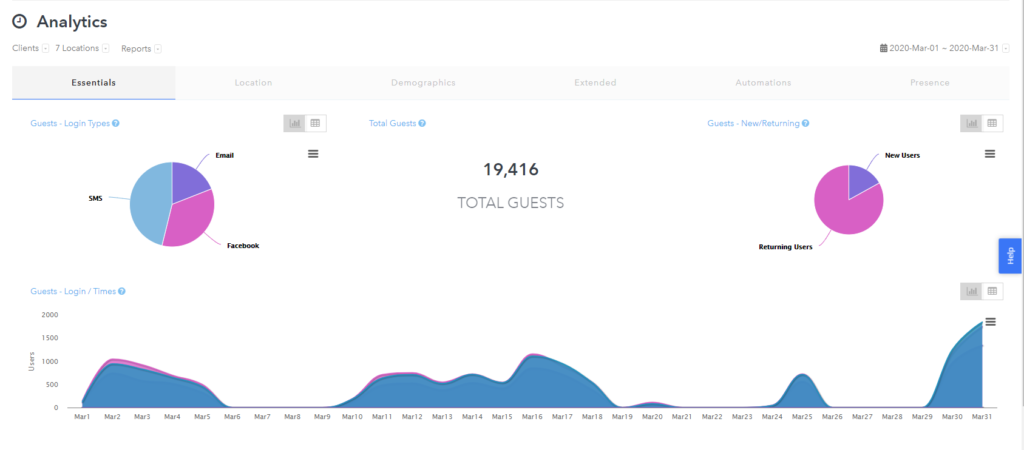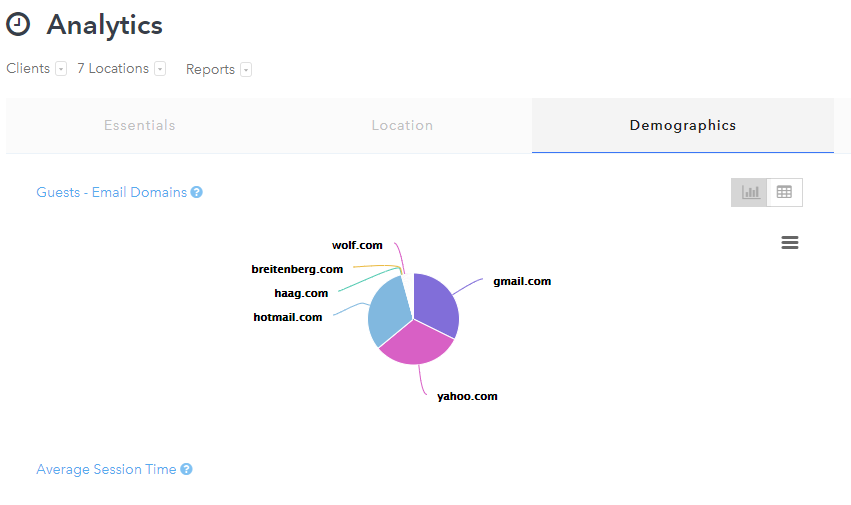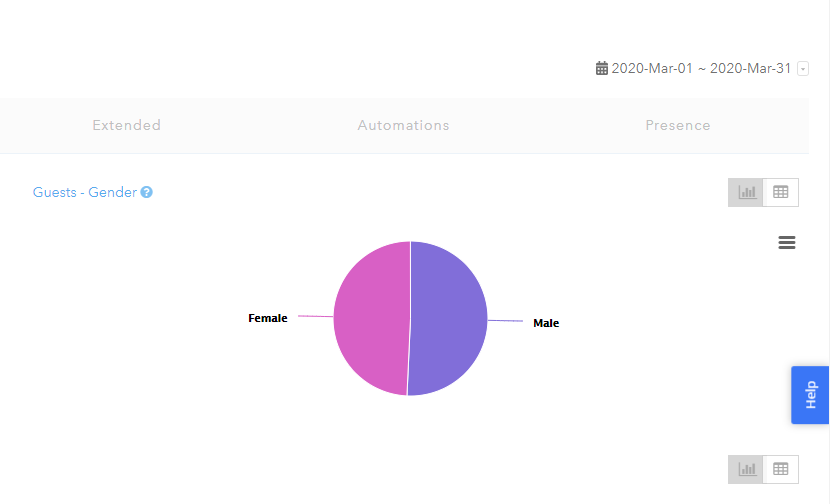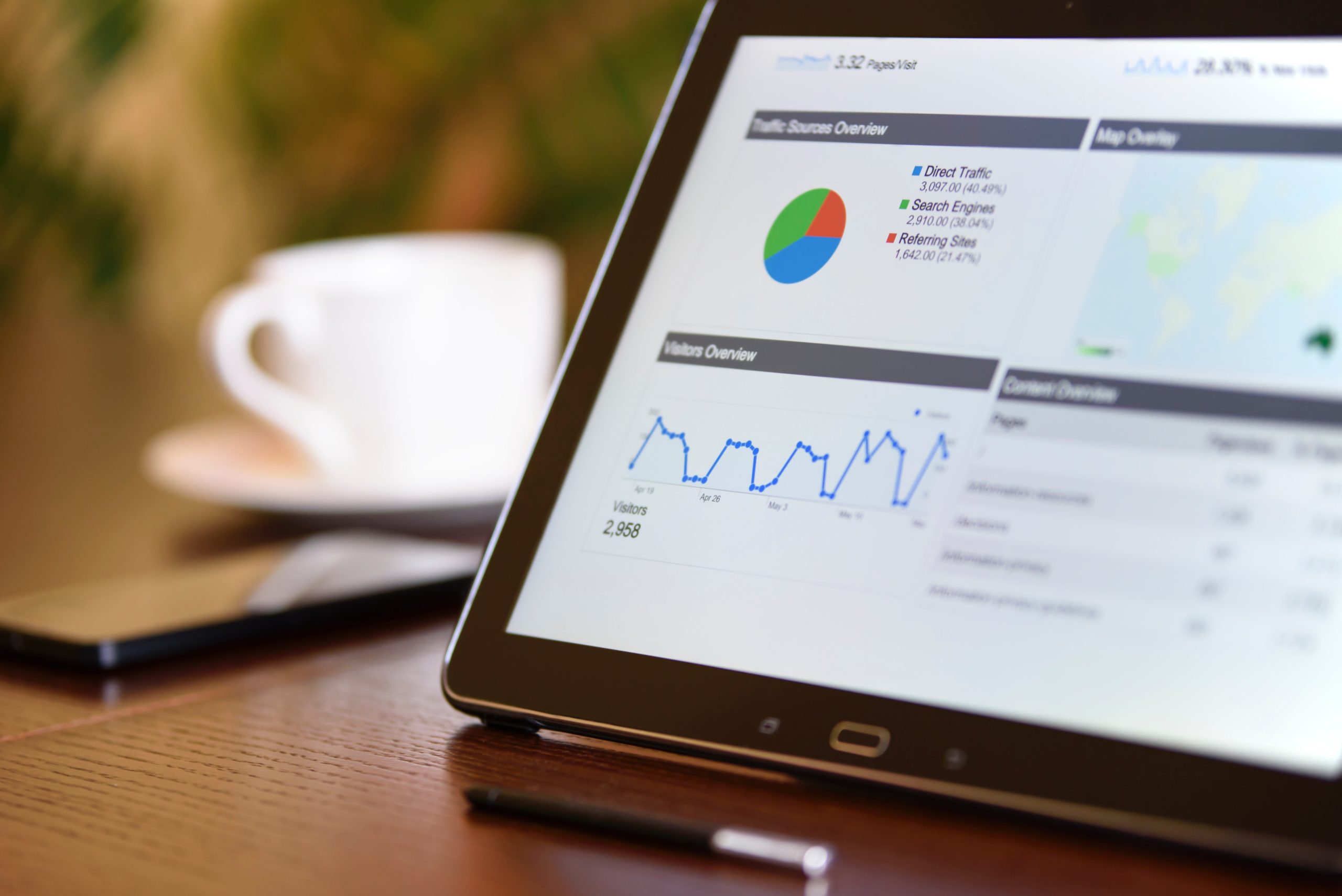WiFi marketing analytics, the data that fuels WiFi marketing, enables businesses to create a personalized customer experience by delivering tailored content and specially timed offers based on customer demographics and behavior.
By analyzing who connects to their guest WiFi service and studying data about everyone within range, companies can gain new insights into their target audience and refine the way they engage with customers and prospects.
The promise of increased revenue for client businesses is the primary selling point for guest WiFi service, so resellers need to understand the role that WiFi analytics play in fulfilling that promise.
This article will explore WiFi analytics, first identifying the kinds of customer data that businesses can collect and track, then looking at ways that data can be used to improve customer engagement and increase loyalty. We’ll wrap up with a brief look at how WiFi analytics can be integrated with CRM, email autoresponders, and other parts of your clients’ marketing processes.
Customer Behavior Analysis from Two Vantage Points
One way to think about WiFi analytics is to split the data into two categories, one coming from a telescopic vantage point and the other from a microscopic view of customer behavior.
You won’t literally be spying on your customers from a distance, nor will you be examining them on a cellular level!
Rather, the “telescope” view of customer behavior, gleaned from anonymous WiFi data, gives you a high-level understanding of customers’ actions as a group. The “microscope” view gives you a more detailed look at your customers, including data that was freely shared by users.
Let’s start by examining the sort of data that you can track even when users aren’t logged in to the guest WiFi network.

Anonymous WiFi Data: Your Marketing Telescope
Valuable customer data can be collected by your WiFi router even if many of the people nearby don’t log in to the network. Such data is known as anonymous WiFi data.
Anonymous WiFi data is based on a unique identifier that a device sends out when searching for a WiFi network to connect to, and it’s the key to presence analytics, which we’ll discuss later. Now, let’s look at the kinds of insights that can be gained when the user has not logged in to guest WiFi but is near the router.
Once a device’s unique identifier is detected and stored, it can be used to track each time the device comes within range of the WiFi router, enabling the following insights:
- Is the customer a first-time visitor?
- Is the customer a repeat visitor?
- What’s their “dwell time”—how long do they stay within range of the router?
- What day of the week and time of day do they visit?
- Which location of the business are they near?
Having data to answer those kinds of questions can enhance a business’ understanding of generalized user behavior. Collecting this type of WiFi data yields some crunchable numbers, allowing business owners to examine metrics like customer repeat rates and popular visit times to reveal trends in foot traffic and respond in a way that capitalizes on the knowledge.
Connected WiFi Data: Your Marketing Microscope
Once a user has logged in to a guest WiFi network, the business owner can gather more detailed information.
It’s common to streamline the guest WiFi login process by prompting users to enter a single piece of contact information, like their email address or phone number, or by allowing social media login.
The information you require a guest to enter will be your primary contact information for that individual, but it doesn’t have to be the only way you engage with them. If you require an email address to log in, for example, you could ask the user to provide their phone number or social media contact information as part of a user profile. Having multiple channels to engage customers improves your chances of leveraging their most-used channel, plus, it allows different channels to be used for different types of campaigns.
While it’s useful to obtain multiple forms of contact information, when that data is associated with user-supplied profile data, like the person’s first and last name, gender, and date of birth, it’s even more valuable as input for optimizing loyalty campaigns.
After a visitor has logged into the WiFi network, the system can log details like phone number, device type, and operating system. If a user has logged on to the guest WiFi system before, their visit history tracks when they connected and for how long. Visitors may have been sent targeted messages as part of the client company’s loyalty marketing campaign. In which case, the automation history associated with the user’s device is another kind of data that can be extracted from the device of a logged-in user.
It’s important to point out that collecting this data with appropriate measures in place does not violate any user privacy rules. There’s more on that topic below.

A Note About WiFi Data Privacy
If a company were to misuse customer data, that could significantly damage the brand’s credibility, destroying any trust earned with its customer base. A single publicly reported case of data misuse can do permanent damage to a company’s reputation.
MyWiFi Networks takes customer data privacy very seriously. We make it easy for companies to maintain compliance with regulations related to collecting user data, like the GDPR, for example, a set of rules put in place to ensure websites servicing the EU are secure and follow the prescribed data privacy protocols. Our platform helps businesses comply with data privacy laws, giving WiFi network operators ways to define their own privacy policy and set custom legal terms and conditions. We also provide a multilingual, fully compliant customer portal for guests to opt-out at any time.
How WiFi Analytics Can Drive Loyalty Marketing
At the core of WiFi marketing is your clients’ ability to collect customer data and use it to automate loyalty programs and optimize customer communications.
Here, the distinction between anonymous data and connected data comes into play again. Below, we’ll explore how those two kinds of WiFi data can be used to optimize daily business operations and refine the content and timing of customer outreach.
Gain Valuable Insights by Generalizing Customer Behavior
Anonymous WiFi data yields presence analytics that can be used to track in-store (or near-store) customer behavior. Often visualized with the help of graphical footfall heatmaps, presence analytics allows businesses to use raw data about visitation near the router location as an indication of when their customers and prospects are in the vicinity, how long they stay, etc.
This real-time view of foot traffic can help companies adapt to consumer behavior by changing their hours of operation for example, by adjusting the timing of a loyalty offer, or otherwise leveraging visitor metrics to improve customer engagement.
While it’s possible to identify and project peak hours through old-school methods like analyzing sales receipts, WiFi marketing analytics, specifically anonymous WiFi data, can tell you much more about your customers and prospects than the time of day they’re most likely to visit.
Data that reveals how long customers typically stay in the establishment can lead business owners to create new offers that will compel patrons to stay longer.
Analytics that reveal foot traffic details can empower businesses to implement new promotions for customer loyalty. Knowing that you’ll have a spike in visits from repeat customers every Saturday afternoon, for example, could help you optimize your loyalty program by offering a Saturday Special, perhaps.
The MyWiFi Networks platform makes it easy to drill down on presence analytics to focus on many useful metrics, looking at any time period, to gain valuable insights into the behavior of customers and prospects.

Make it Personal—Use WiFi Data to Better Target Customers
Compared to anonymous WiFi data insights, the in-depth knowledge you gain about logged in customers is of far greater value. The information stored in users’ guest profiles becomes actionable demographic data that’s easy to filter and analyze as input for the automation of loyalty marketing programs.
Collecting customer contact information is essential for businesses that are trying to encourage customer loyalty. It allows them to send out timely messages and create targeted ad campaigns to prompt repeat visits.
It’s important to obtain contact information associated with the target audience’s most-used communications channel, whether that’s phone numbers to allow SMS messaging, email addresses, or social media info. In that way, a business can leverage its customers’ favorite communication channels to maximize interaction, foster loyalty, and drive return visits.
Gathering demographic details about customers can also greatly improve a company’s ability to conduct targeted marketing campaigns. Knowing the average age of your customers, their genders, and other details can help focus marketing efforts for maximum effect.
One type of digital marketing optimization that’s made possible by WiFi analytics is related to the implementation of WiFi marketing automation triggers.
Triggers can be defined so certain customer details will automatically initiate a predefined type of outreach—a communication that aligns with the user’s behavior. For example, when a guest first connects to the WiFi network, a welcome message can be sent. When the customer disconnects, they could receive a prompt to post a review.
A customer’s visit history can also be used to define triggers, as can their demographic profile or any other data that was collected about them. For example, a triggered message timed with the customer’s birthday is a proven way to invite that person in for a return visit. The time since a guest last visited can be used to trigger a re-engagement message.
Triggers help ensure that all your marketing communication is perfectly timed, which is an important aspect of many digital marketing strategies, including the implementation of a drip campaign sequence.

Integrations that Drive WiFi Marketing Success
Some types of WiFi data can be used within seconds of being gathered, instantly integrated into your marketing stack so that existing workflows, such as your CRM or email marketing platform, can facilitate streamlined and automated loyalty campaigns.
Not all WiFi data is like that. Anonymous WiFi data is most valuable in the hands of a marketing strategist who can leverage what it reveals about customer behavior to tweak operational details.
Connected WiFi data, on the other hand, has instant value for your marketing campaigns.
You can send guest data to your marketing stack to put your WiFi marketing automation triggers on autopilot. Systems can be configured to automatically send emails or SMS messages, and businesses can define rules that initiate actions by a CRM system, an email autoresponder, or a 3rd-party app.
Enhance Customer Engagement with WiFi Marketing Analytics
Driven by the data collected via a managed WiFi network, a business’ loyalty marketing programs can be optimized and automated. Guest data can be fed into the company’s marketing processes, with triggers controlling the timing and content of messages.
A business can further streamline marketing processes by integrating its flow of WiFi marketing data with 3rd-party CRM platforms, email autoresponders, and other marketing stack software.
As a reseller, you’ll sell more of what you sell if you can effectively convey to clients and prospects the high value of WiFi marketing analytics and data capture. They’re central to the primary value proposition of WiFi marketing, which is to increase revenue for the client business.
Taking a holistic view of WiFi marketing data is how businesses can get the most out of this valuable form of customer data. Presence analytics can help them gain a deep understanding of foot traffic trends, while the data collected from users who have logged into the network enables strategies for highly targeted outreach.



2 thoughts on “WiFi Marketing Analytics and the Insights You Can Get”
Pingback: Making the Advantages of Digital Businesses Available for Brick-And-Mortars | MyWiFi Networks
Pingback: Tap into WiFi Analytics to Improve Your Client's Business | MyWiFi Networks